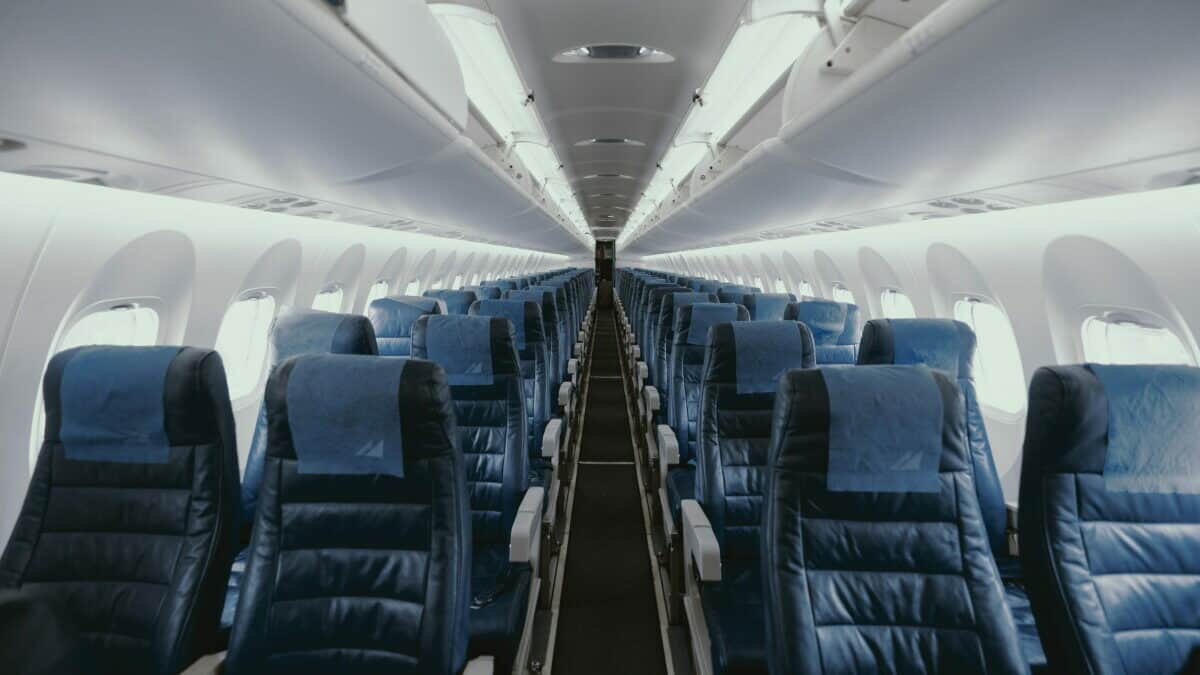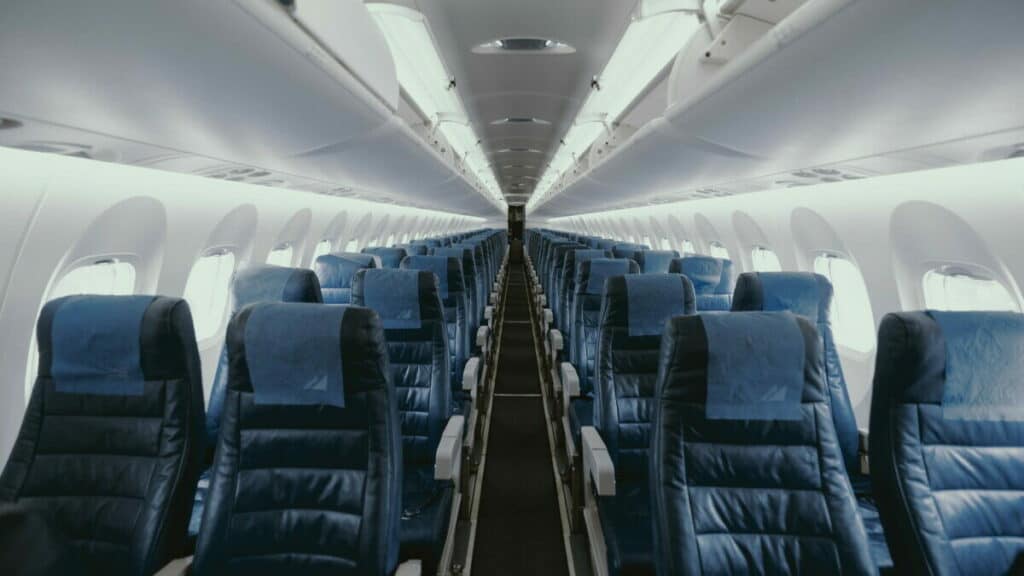
This summer I was traveling by airplane to see family and during the cruise, my son pulled out his bag of chips which he had brought from home. The packet had inflated like a balloon and my son thought it was hilarious and was afraid to open it. He asked why this had happened and I told him it was all to do with cabin pressurization.
Airplane cabins are pressurized to ensure every person on board has enough oxygen to breathe. As airplanes climb above 12,500 feet FAA regulations require everyone onboard an aircraft to be on oxygen or the cabin be pressurized. Pressurizing the cabin allows for greater passenger environmental comfort.
To ensure the cabin remains in a comfortable state for the passengers the aircraft pressurizes the cabin and carefully controls its atmosphere. To find out why and how this is done please read on…
Why are Airplane Cabins Pressurized?
As a person climbs above 10,000 feet above sea level the pressure forcing oxygen molecules through the lining of their lungs and into their blood becomes insufficient and the number of oxygen molecules per given area is less. Without oxygen being constantly added to their blood they become Hypoxic (Blood Oxygen Starvation).
If left unchecked, hypoxia can lead to unconsciousness and death. There are two ways that persons traveling on an airplane can avoid hypoxia:
- Supply each person with a constant oxygen supply
- Pressurize the airplane cabin to a low altitude
As airplanes ascend to their cruising altitude, the pressure inside the airplane also decreases, unless it is a pressurized cabin. At sea level, the air pressure is around 100kPA/14psi. At around 35,000ft/10,000m the pressure is significantly less at around 26kPa/4psi:
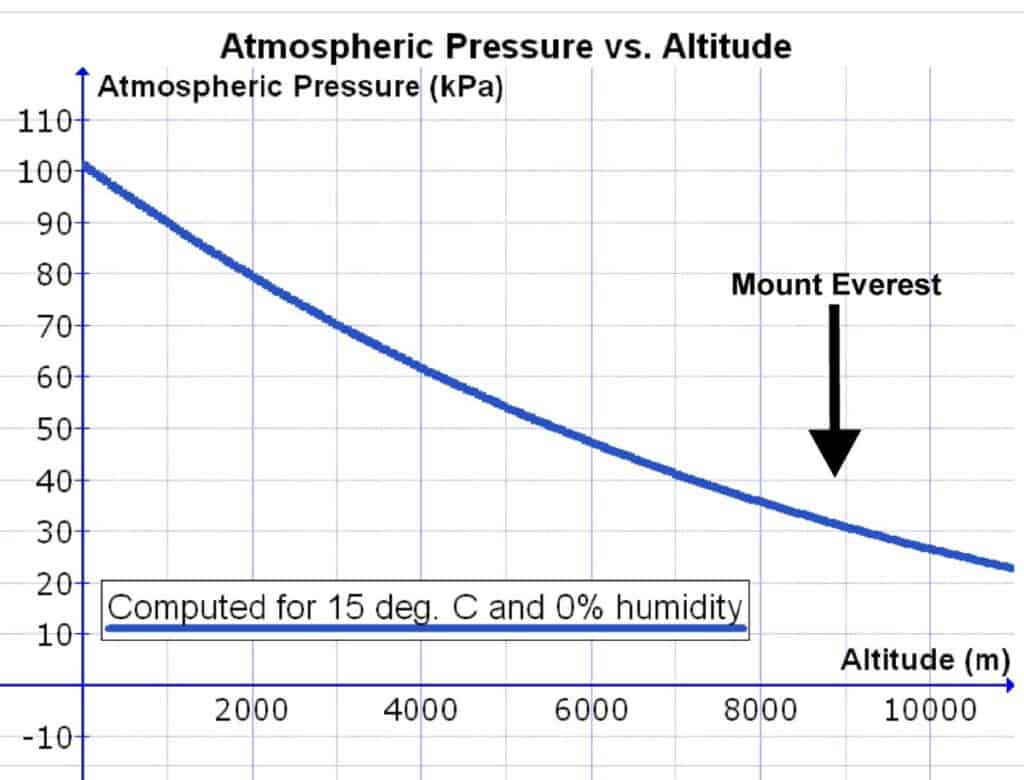
For airplanes without pressurization systems, no supplemental oxygen is required when flying at or below 12,500 feet above sea level (ASL);
Above 12,500ft but up to 14000ft, the flight crew only are required to use supplemental oxygen if flying for over 30 minutes.
Above 14,000 all flight crew must be using supplemental oxygen. It must be available to passengers but they aren’t required to use it.
Above 15000ft, everybody must use supplemental oxygen at all times.
With every commercial airliner typically flying over 30,000ft, without cabin pressurization everyone needs oxygen. Not only would this require large storage tanks, and be expensive to fill before each flight, but it would also be very uncomfortable for the passengers to wear a tethered mask for the entire flight.
Cabin pressurization changes that.
Why Not Just Fly Lower?
Airlines try to find the most fuel-efficient route for every flight. At altitudes of 35,000-40,000ft the air is thin enough to produce a minimal amount of drag, but dense enough to allow the engines to produce thrust. Below this, there is more drag, and above this, there isn’t enough oxygen for the engine to produce efficient thrust.
Because airplane engines are designed to be the most fuel-efficient at these higher altitudes the airline planners design their routings based on high altitudes. Flying lower means the engines work less efficiently and burn more fuel.
With fuel being the single biggest annual operating cost for an airline, every chance they get to reduce their fuel bill is taken. Flying at high altitudes accomplishes that.
Learn More…
Try These Articles:
* How Do Airplanes Handle Lightning Strikes?
* How Do Airplanes Not Freeze?
How are Airplane Cabins Pressurized?
Cabins are pressurized via air from the engine. Turbofan engines take in air, pass it through a series of compression stages, mixes it with fuel, and ignites it for thrust. Some air is diverted after being compressed to be used for pressurizing and air conditioning the cabin. This is called Bleed Air.
Compressed air is very hot, therefore, after being diverted, the bleed air is taken to a heat exchanger, and then to the refrigerating unit called an Air Cycle Machine for cooling. Moisture is removed from the air at the Water Separator before being introduced into the cabin. This is why your skin may feel dry on long-haul flights.
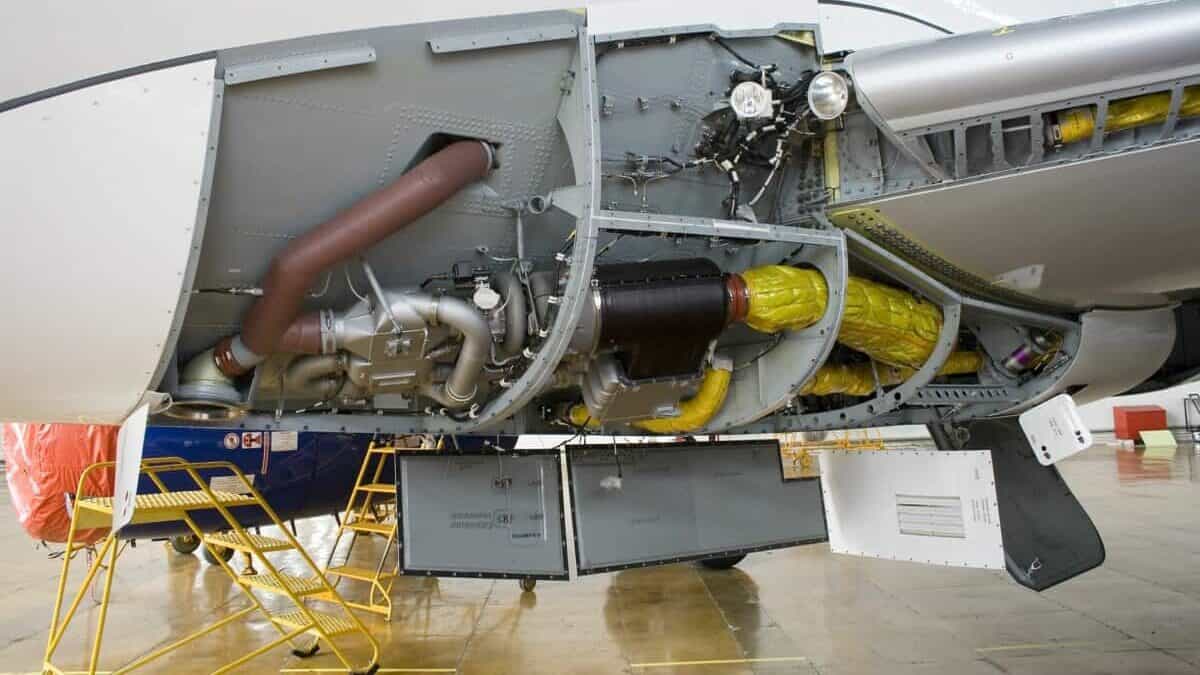
Diverting air from the engine reduces engine efficiency as not all of the air it compresses is used for combustion. Designing airplanes is all about compromise, and for this system, some fuel efficiency is sacrificed for bleed air pressurization in lieu of filling the plane with oxygen tanks.
New airplane models like the Boeing 787 have incorporated electrically-driven compressors, eliminating the efficiency drop caused by bleed air pressurization from the engines.

Join My Newsletter & Get Great Tips, Information and Experiences To Help You Become a Superb Pilot!
How is Airplane Cabin Pressurization Controlled?
Cabin pressure is maintained by the Cabin Pressure Controller which controls a valve called the Outflow Valve. This valve allows air to escape the cabin at a controlled rate, controlling the amount of air pressure in the cabin. As the atmospheric pressure reduces, less air is allowed to outflow the cabin.
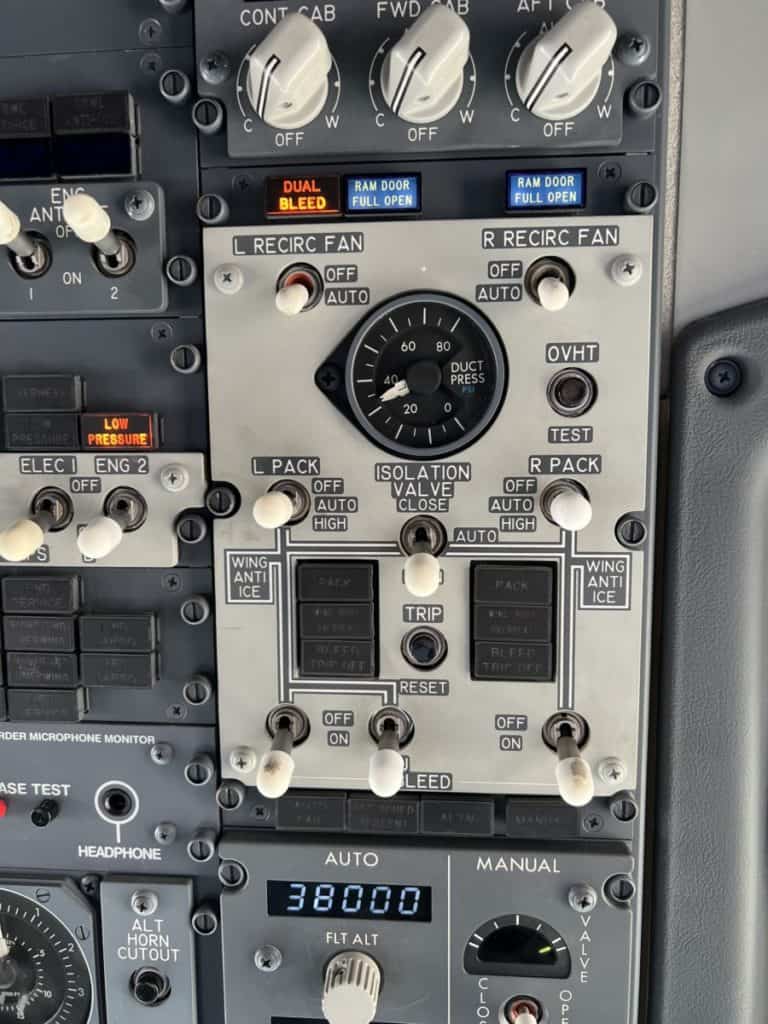
Pressurization begins on the ground when full thrust is engaged. The Outflow Valve is automatically closed and bleed air pressurization begins. The cabin pressure initially increases.
As the plane ascends, the outflow valve slowly opens to a point where the amount of air escaping causes a decrease in pressure at a rate proportional to the rate at which the plane is climbing.
This initial increase and then gradual decrease in cabin pressure is provided so the passengers feel less of the transition from high pressure to low pressure.
This is why you may need to clear your ear pressure during the climb and descent.
When the plane levels off at cruising altitude, the outflow valve begins to close up to a point where the cabin altitude levels off at the preset value, usually 8,000ft (2,400m). Planes with stronger composite materials used to build the main fuselage like the Airbus A350 or Boeing 787 can go as low as 5,000ft (1,500m). The outflow valve doesn’t fully close as the bleed air produced by the engines is more than is required to pressurize the cabin.
If the outflow valve fully closed the engines would continue to fill the cabin with pressurized air until it burst like a balloon. Not a good scenario! To prevent that the airplane is fitted with multiple pressure relief valves to prevent both over and under-pressurization.
Why Not Just Pressurize the Cabin to Sea Level?
We all know that when an object descends deep into the ocean there becomes a point where the water pressure becomes so immense it will crush any object with air inside it. The opposite happens for an airplane.
As the airplane climbs, we see in the chart above that the air pressure drops to just a couple of kPa. If the air inside the cabin was pressurized to sea level for the flight, the difference between the pressure outside the airplane and inside the cabin would be around 74kPa (100kPA-26kPA) or around 10psi.
This does not sound like a lot of a difference but to the airplane designers who are designing the structure to ensure the air pressure difference does not crush the fuselage, it is huge. 74kPa or 10psi over the entire surface of a commercial airplane is a serious force.
By raising the cabin pressure to simulate its occupants being around 8,000ft (2,400m) for example would lower the pressure differential while also keeping passengers in a comfortable environment.
This creates an inside-to-outside pressure differential of around 50kPa (76kPa-26kPa) or around 7psi.
With composite fuselages able to withstand much higher pressure differentials designers are able to drop the cabin pressures down to 5-6,000ft to allow for even greater passenger comfort. If the airplane is cabin pressurized to 5,000ft (1,500m) the pressure difference would be only 60kPa (86kPA-26kPA) or around 8psi.
Designing an airplane to withstand 7-8psi is far easier than 10psi! If they could, they would!
It is for this reason that my son’s bag of chips inflated like a balloon. It was sealed to a pressure at sea level so when the cabin pressurization system set the cabin pressure to 8,000ft the pressure inside the bag was higher than the surrounding cabin pressure making the bag inflate. I told him to open them before the bag exploded!
Can Objects Get Sucked Out of an Airplane Like in Movies?
A sudden hole or opening in the airplane’s structure/skin will cause a rapid decompression. Air will rush from inside the cabin to outside of the aircraft as the air tries to equalize the pressure difference. The pressure will equalize within a matter of seconds and then the suction will stop.
Although the breeze from the big open hole as the airplane flies at 400knots will not!
Any object that is near the opening will be moved by the airflow. If the opening is large enough and any person is not strapped in with their seat belt they could be sucked out of the aircraft. This is one of the reasons why regulations advise you to always wear a seat belt when flying!
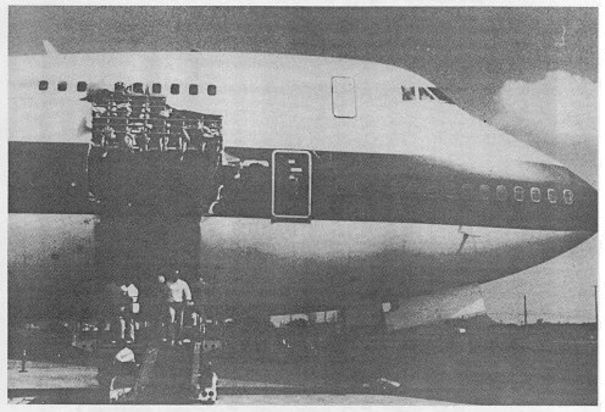
On February 24 1989, United 811, a Boeing 747 suffered an explosive rapid compression when a cargo door failed.
3 entire rows of seats were ripped from their mountings and exited the aircraft resulting in 9 fatalities. The pilots lost both starboard engines and suffered wing damage but were able to make a safe landing back in Honolulu 24 minutes later!
Learn More…
Try These Articles:
* This Is Why Plane Windows Are So Small!
* What is an Aircraft APU and What’s it Used For?

